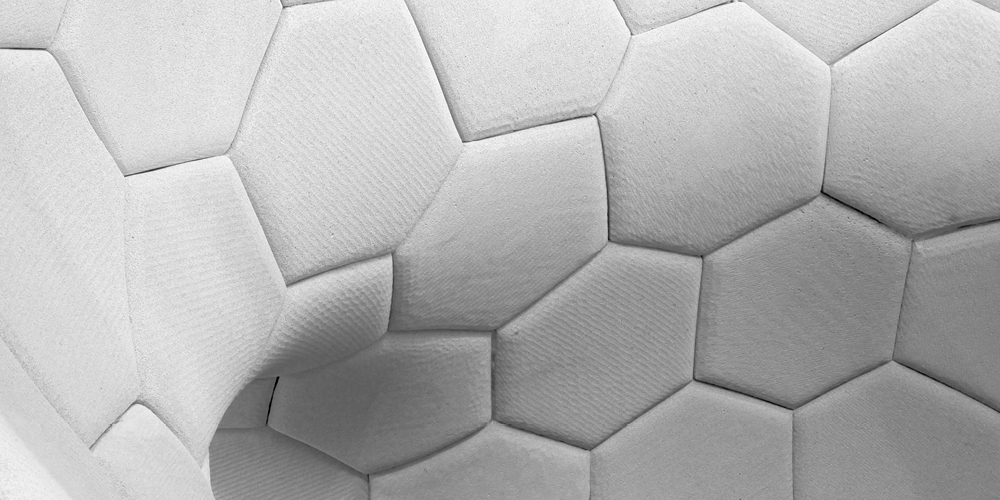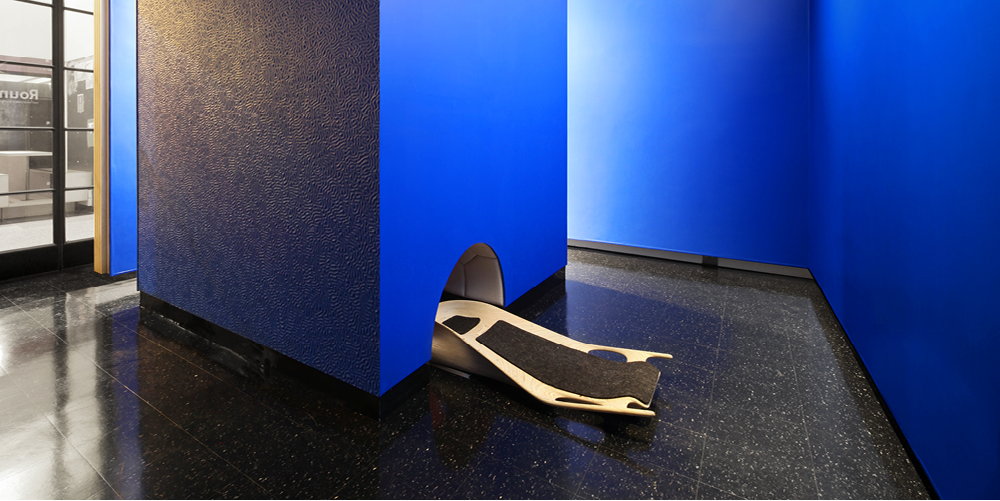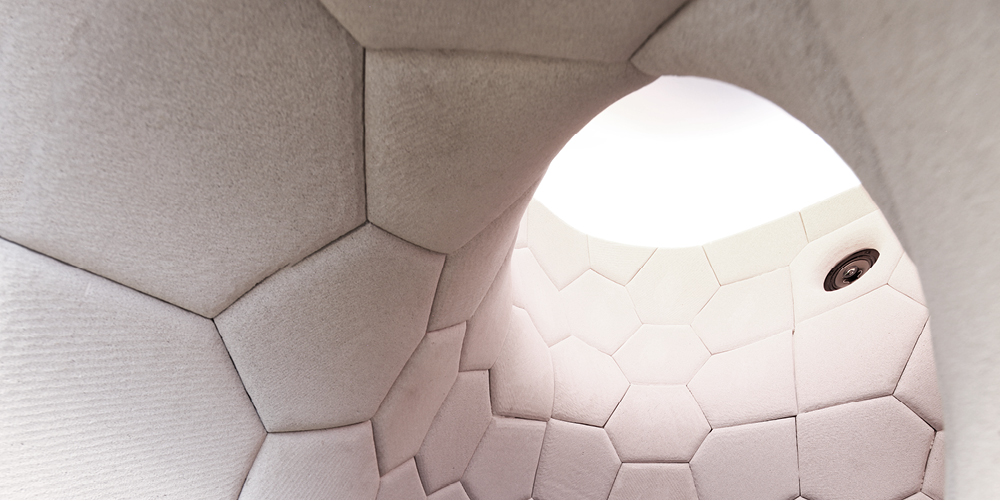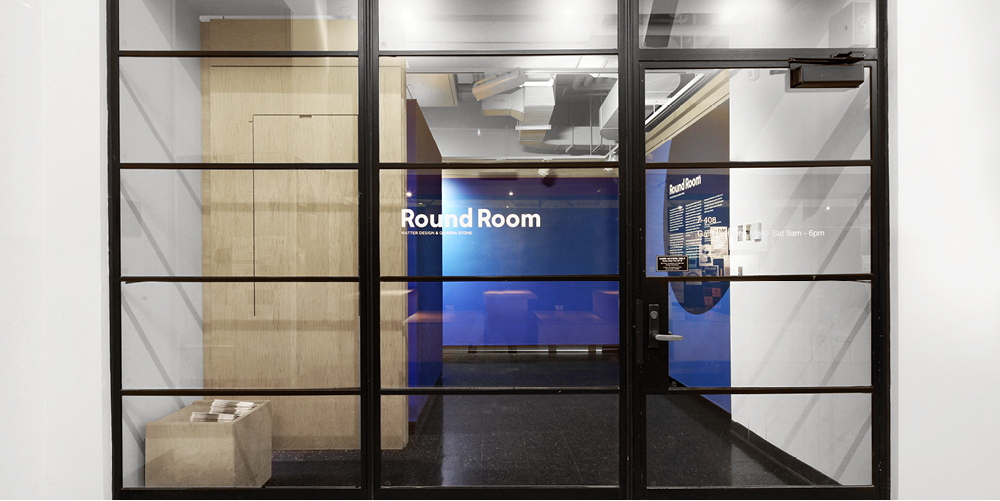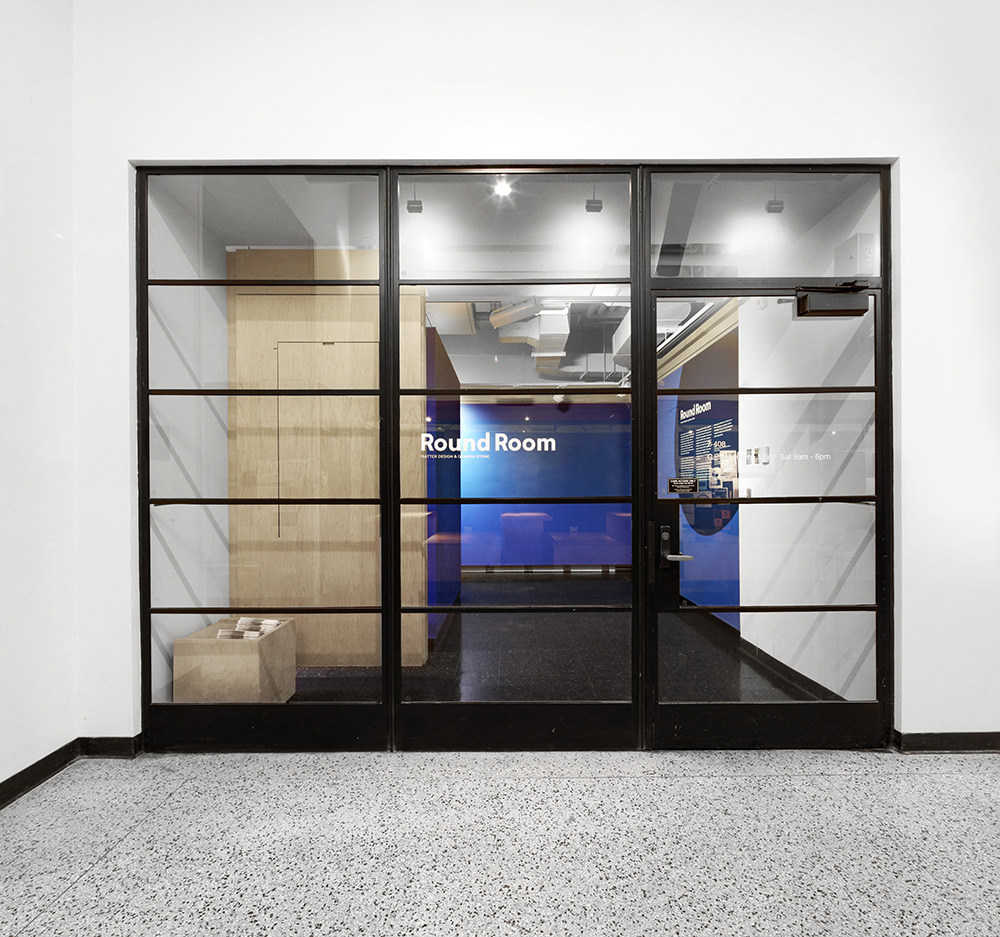Round Room
Matter Design & Quarra Stone
What would the Incas create today with their advanced knowledge of precision stone carving and our contemporary technology? Round Room is a translation of the Inca wedge method into a digital process that manifests in the Baroque tradition of the interior model. This mash-up of cultures and times productively reconsiders how we define space—volumetrically.
Round Room is composed of unique units carved with a water-fed robotic arm from Autoclave Aerated Concrete; each unit aligns with its neighbor on the visible (interior) edge. Following the Inca wedge method, the exterior edge (hidden in the poché) opens to allow mortar to be packed in from behind. In contrast to typical masonry construction of in-situ adjustment that employs mortar for tolerance, this method of neighboring alignment relies on precision carving to inform the assembly. In this case, the mortar is fill. Inherent to this process is a direction to the assembly—an interior and an exterior condition—thus re-engaging a ubiquitous type in the history of volumetric architecture—the rubble-fill wall—whereby precision is visible, and fill is utilitarian. This method is anti-isomorphic. The perimeter vermiculated box contrasts with the voluptuous interior, each rendered as mass and volume.
While this project samples knowledge from the Incas, it advances this knowledge by rolling their method into three-dimensional space. The complex figure of Round Room is assembled without the requirement of alignment jigs or formwork. The purpose of this research is not to revert to this antiquated architecture, but rather to re-inform contemporary practice with the knowledge of the past. These performative volumetric methods consider alternative spatial opportunities.

